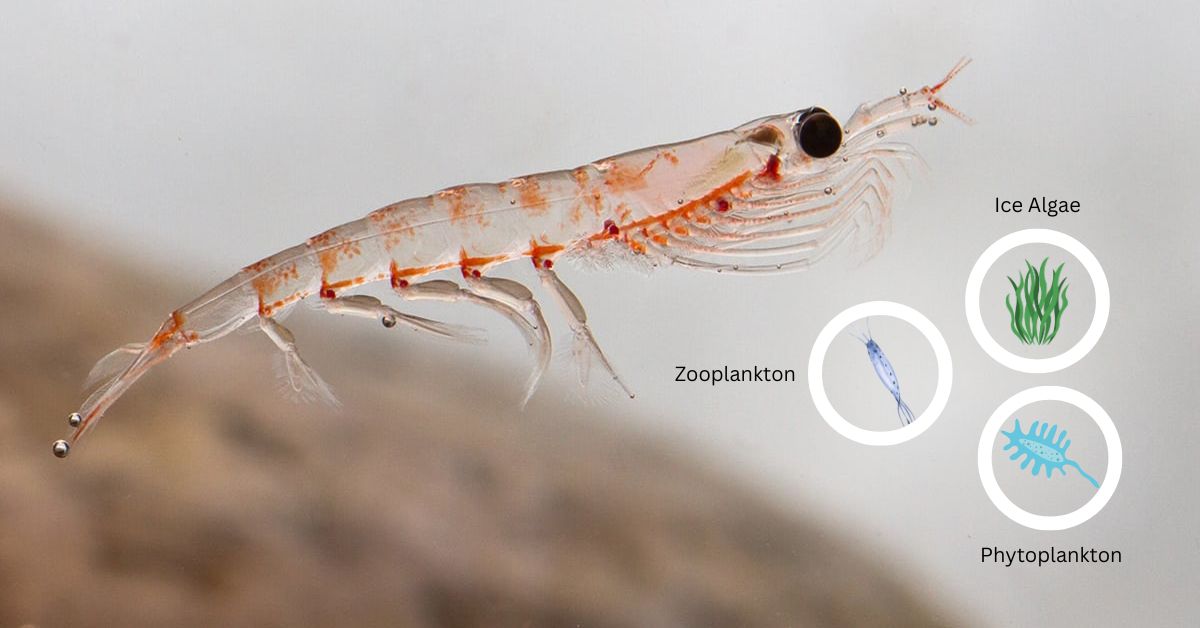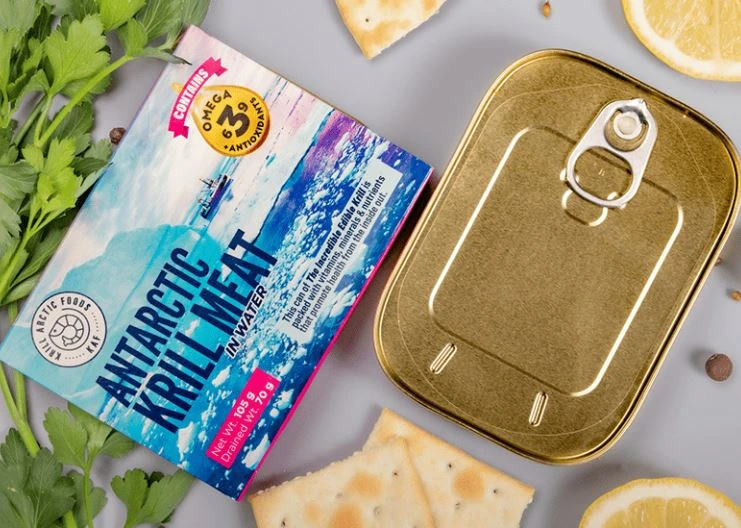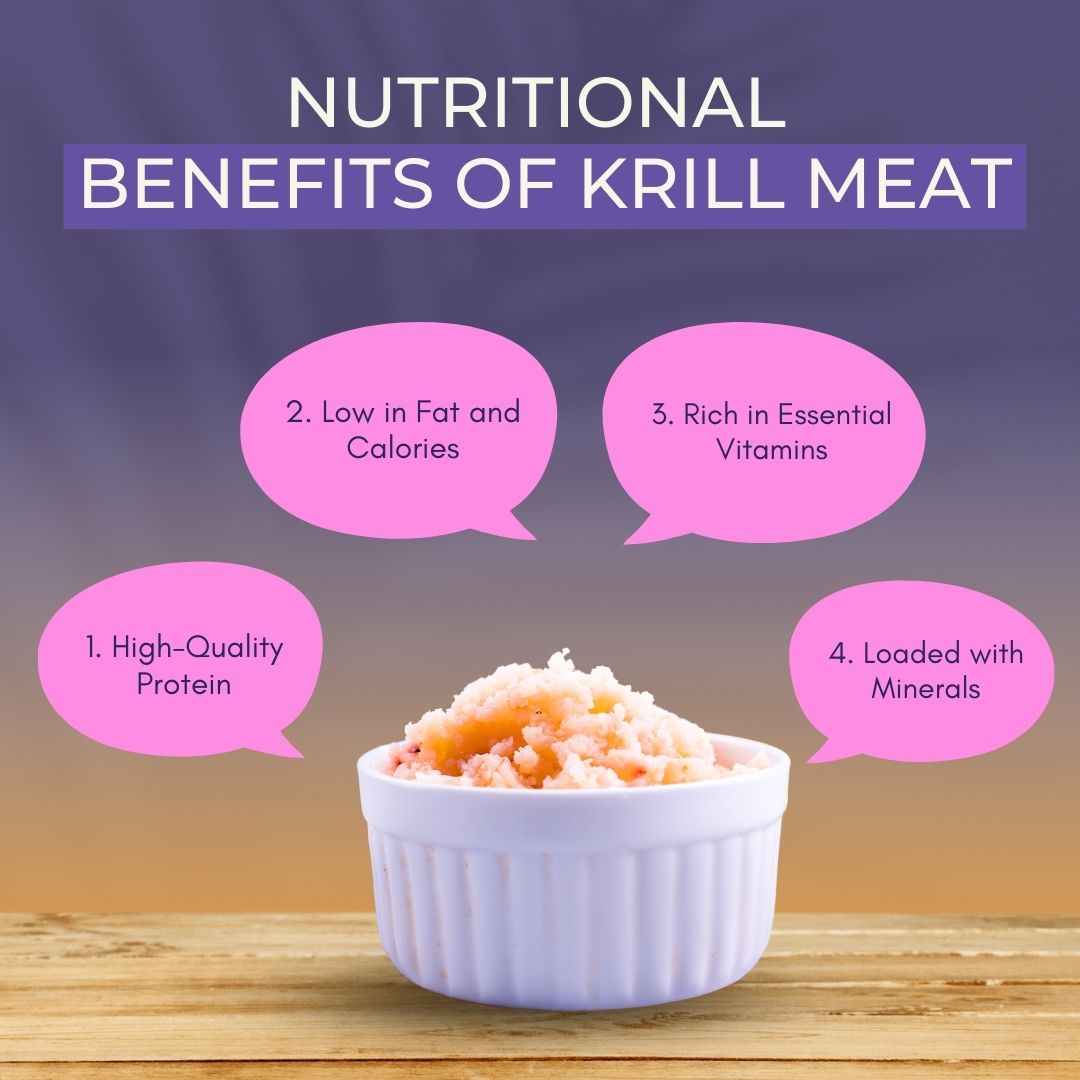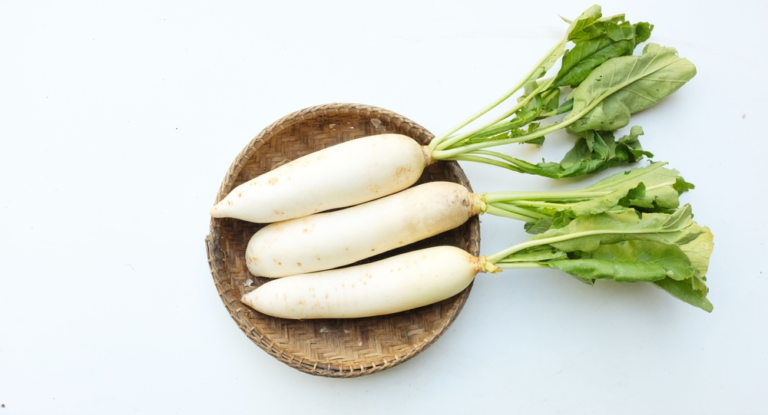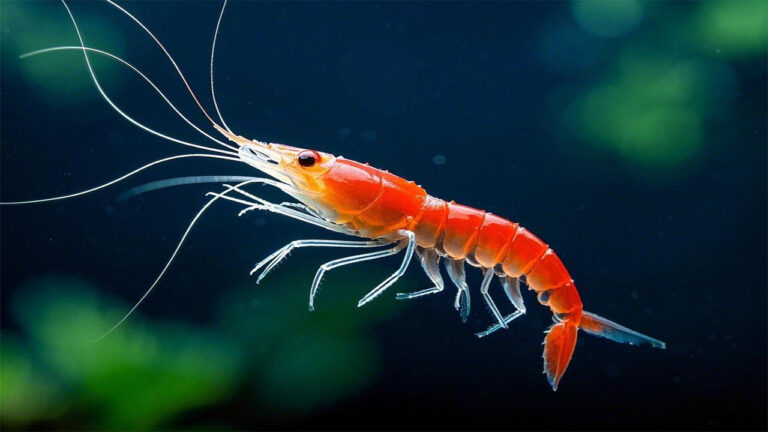In the icy waters of Antarctica, tiny shrimp-like creatures known as krill thrive in enormous swarms. Despite their small size, these crustaceans are the backbone of one of the most crucial marine food chains on Earth. The Antarctic krill (Euphausia superba) alone accounts for nearly 400 million tons of biomass—more than the weight of all humans combined!
These tiny yet mighty creatures are a vital food source for marine animals like whales, seals, penguins, and fish, making them indispensable to ocean health.
But what exactly keeps krill thriving in such harsh environments?
Understanding their diet is key, as it not only sustains them but also supports countless species that depend on them.
Let’s explore what krill eat and why they’re so vital to the marine ecosystem.
Where Are Krill Found? The Ocean’s Nutrient Hubs
Krill, those tiny but essential ocean inhabitants, are found in large swarms across various seas. The Southern Ocean surrounding Antarctica is home to the largest populations, where Antarctic krill form dense swarms that can stretch for miles.
While Antarctic waters host the densest populations, smaller species of krill can be found in the North Atlantic and North Pacific Oceans. These regions, although less abundant, are also rich in nutrients that support krill populations. Krill thrive in cold, nutrient-rich waters, where they feast on phytoplankton and algae, playing a pivotal role in the marine food web.
What Do Krill Eat: Primary Components of Krill’s Diet
Krill may be tiny, but their diverse diet is what makes them so crucial to ocean ecosystems. Let’s explore the main components of their diet and how these little creatures get the nutrients they need to thrive in some of the harshest environments on Earth.
Phytoplankton: The Green Powerhouse

Do krill eat phytoplankton?
Absolutely!
Phytoplankton are the bread and butter of a krill’s diet. These microscopic plants float on the ocean’s surface, harnessing sunlight to grow. Imagine them as the ocean’s floating vegetable garden, packed with nutrients.
Krill are filter feeders, using their specialized legs to capture these tiny plants. They scoop up seawater, trap the phytoplankton, and funnel them into their mouths. It’s a bit like a whale using baleen plates to filter food, but on a much smaller scale. In the nutrient-rich waters of Antarctica, where phytoplankton are abundant, krill can eat their fill, especially during the summer months when sunlight is plentiful.
But why are phytoplankton so important? They’re packed with essential nutrients, providing krill with the energy they need to survive and reproduce. In fact, without phytoplankton, what do krill eat in Antarctica would become a much tougher question to answer, especially during the colder months.
Zooplankton: Protein-Packed Snacks

While krill primarily feed on plants, they’re not strictly herbivores. Do krill eat zooplankton?
Yes, they do, especially when phytoplankton is in short supply. Zooplankton are tiny animals drifting in the ocean currents, and they include organisms like copepods, small crustaceans that look like mini versions of krill.
Consuming zooplankton provides krill with a rich source of protein, which is essential for growth and reproduction. Picture zooplankton as the “protein shakes” of the ocean—small, packed with nutrients, and perfect for a quick energy boost. This diverse diet helps krill adapt to changing food availability, ensuring they can survive even when phytoplankton levels drop.
Krill’s ability to switch between feeding on phytoplankton and zooplankton makes them resilient. It’s one of the reasons they’ve been around for millions of years, supporting life from the tiniest fish to the largest whales.
Ice Algae: A Winter Lifeline
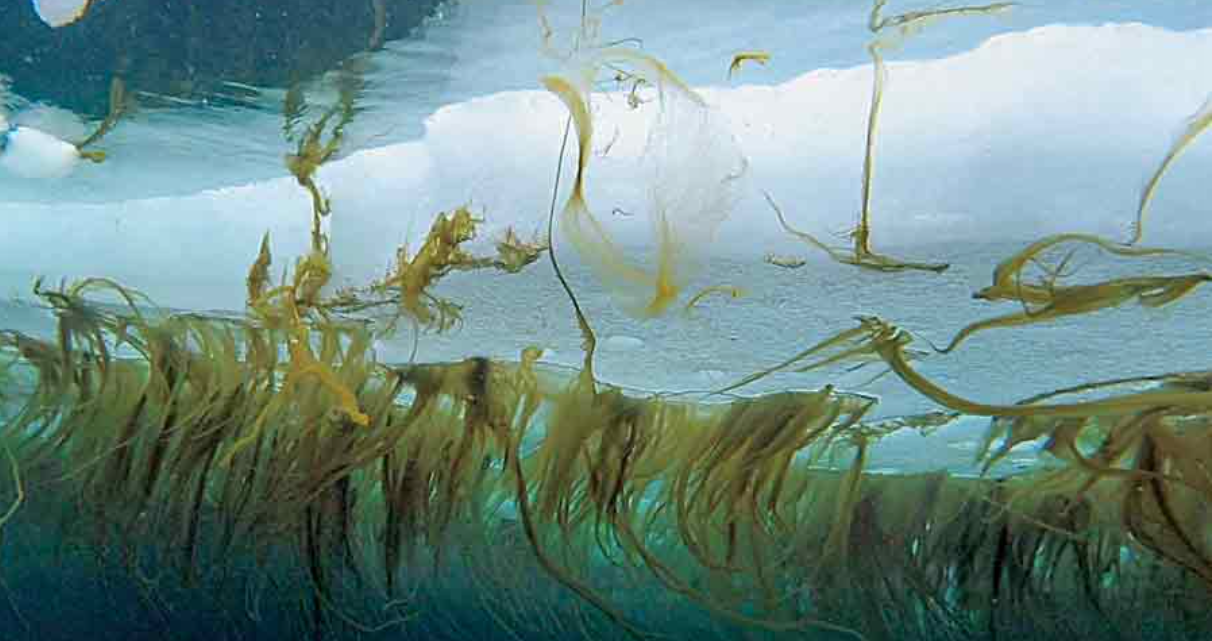
When winter arrives in Antarctica, the sun disappears, and the surface waters freeze over. So, what do krill eat in Antarctica when the phytoplankton vanish? This is where ice algae come into play. These algae grow on the underside of sea ice, creating a hidden buffet for krill beneath the frozen surface.
During the harsh winter months, krill migrate up to the ice, scraping off algae with their specialized appendages. Think of it as nature’s version of foraging under the snow. Ice algae are packed with nutrients, providing a vital food source when the open ocean is barren. This unique feeding behavior is what helps krill survive the long, dark Antarctic winters.
The ability to feed on ice algae shows just how adaptable krill are. They don’t just rely on one food source but switch up their diet depending on what’s available. This adaptability is why they play such a key role as a krill food source for larger animals in the ocean.
Krill’s diverse diet—from phytoplankton to zooplankton and ice algae—makes them a critical part of the marine ecosystem. By understanding what these tiny creatures eat, we gain insight into how they support life in the ocean, from fish to whales.
Curious to learn more about the benefits of krill for humans, too? Dive deeper into our content for fascinating recipes and health insights on incorporating krill into your diet!
How Krill Obtain Their Food: Efficient Eaters of the Ocean
Krill might be small, but they’ve mastered some impressive techniques to keep themselves well-fed in the vast ocean. Let’s explore how these tiny crustaceans use their unique feeding mechanisms to gather food and stay nourished.
Filter Feeding Mechanism: Nature’s Little Strainers
Krill are like the ocean’s vacuum cleaners, efficiently filtering out tiny food particles from the water. But how do they do it? It all comes down to their specialized appendages called thoracopods. Imagine a krill using these feathery legs like tiny nets. They scoop up seawater, trap microscopic phytoplankton and other particles, then funnel this nutritious mix straight into their mouths. This process is called filter feeding, and it allows krill to eat constantly as they swim.
But here’s the clever part: krill are incredibly resourceful feeders. They don’t just float around aimlessly waiting for food to come their way. During the day, when sunlight penetrates deeper into the water, phytoplankton gather near the surface. Krill follow this natural rhythm by migrating vertically, moving up to the sunlit layers at night to feast on these tiny plants. This daily commute ensures they get the freshest, most nutrient-rich food.
Vertical Migration and Swarming Behavior: Feeding in Numbers
If you’ve ever seen footage of krill, you’ll notice they gather in dense swarms, sometimes so vast they’re visible from space. This behavior isn’t just for show—it helps them efficiently find food and offers protection from predators.
Krill are experts in vertical migration, moving up and down the water column. At night, they ascend to the surface to feed on phytoplankton, then retreat to deeper waters by morning to avoid predators like fish and birds. It’s like heading to the grocery store during off-peak hours for fresher picks while dodging crowds.
Swarming plays a crucial role in how krill obtain food. By clustering together, they increase water flow, making it easier to capture food particles—like a team using a net to catch more fish. This collective feeding strategy enhances efficiency, allowing a single swarm to consume large amounts of plankton quickly.
Over millions of years, krill have perfected their feeding techniques through filter feeding, vertical migration, and swarming, thriving in some of the ocean’s toughest environments. These behaviors make them vital to the marine ecosystem, supporting the diets of species from tiny fish to giant whales.
Curious about how these tiny creatures sustain ocean life and benefit human health? Dive into our content to discover more about their fascinating adaptations and nutritious krill products.
Nutritional Value of Krill

Tiny as they are, krill pack a powerful nutritional punch. These small crustaceans serve as nutrient-dense snacks for countless marine animals—and surprisingly, for humans too.
A Powerhouse of Omega-3s
Krill are rich in omega-3 fatty acids, especially EPA and DHA, which support heart health, reduce inflammation, and boost brain function. Marine animals like whales rely on krill for these nutrients to stay healthy and energized. And yes, humans can benefit too! Krill oil supplements are popular because they provide highly absorbable omega-3s, along with astaxanthin—a powerful antioxidant that protects cells.
Protein and Vitamins
Beyond omega-3s, krill are loaded with high-quality proteins crucial for growth and muscle repair. For humans, krill meat offers a lean, vitamin-rich protein source, packed with B12 to boost energy and brain function. Think of krill as the ocean’s nutrient bar—tiny but packed with health benefits.
A Sustainable Superfood
While krill may not be as popular as fish or shrimp, they’re a sustainable seafood option. With rapid reproduction rates and vast populations, krill are less prone to overfishing, making them an eco-friendly choice for ocean-sourced nutrition.
Despite their size, krill are nutritional powerhouses—feeding hungry whales and enriching human diets with omega-3s and lean protein. Interested in incorporating krill into your meals? Explore our canned krill meat recipes to satisfy your taste buds.
What Eats Krill? The Role of Krill in the Marine Food Chain
Krill might be small, but they’re the lifeline of the ocean’s food web. If you’ve ever wondered what animals eat krill, the answer is nearly everything that swims, flies, or dives in polar waters. These tiny crustaceans serve as a critical food source, especially in the Arctic and Antarctic regions, supporting a wide range of predators that depend on them for survival.
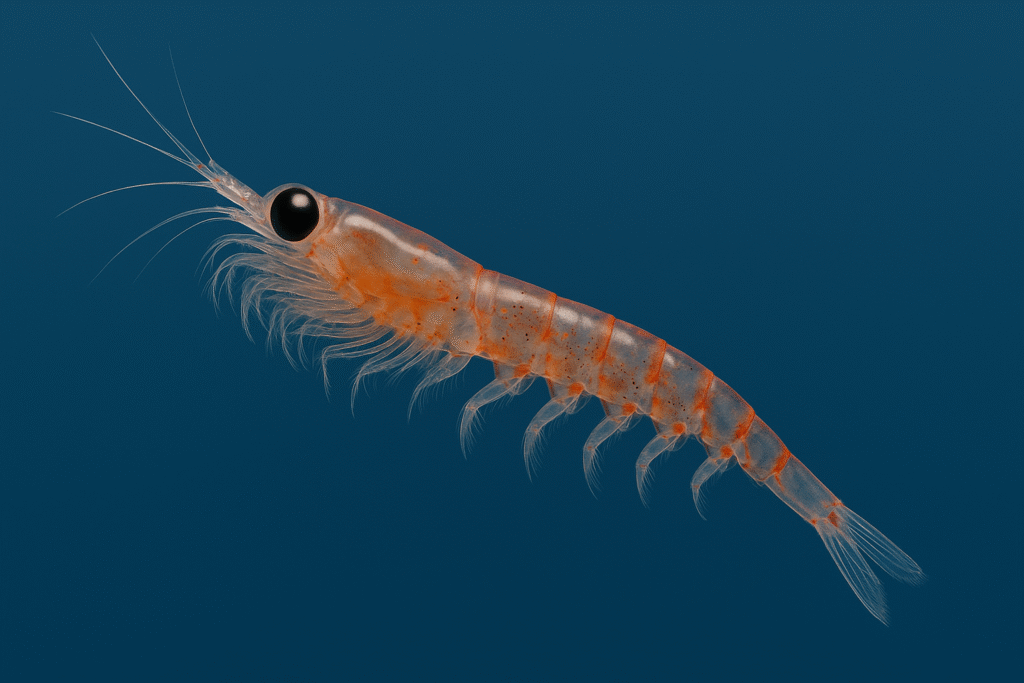
Predators Big and Small: Who’s Dining on Krill?
Let’s start with the ocean’s giants. Whales, particularly baleen whales like blue whales, humpbacks, and fin whales, rely heavily on krill. A single blue whale can consume up to 4 tons of krill a day during feeding season. Picture it like an all-you-can-eat buffet where these massive creatures gorge themselves to build up energy for their long migrations.
But whales aren’t the only ones with krill on their menu. Seals and penguins in the Antarctic also feast on krill to fuel their energy needs, especially during breeding season when they need the extra boost. For penguins, especially species like Adélie and chinstrap, krill is a staple. These birds dive deep into icy waters, snapping up krill with each dive to feed their hungry chicks.
Fish, too, are part of the krill-loving crowd. Arctic species like cod and herring rely on krill as a primary food source, especially during their growth stages. Even squid join the feast, scooping up krill as they swim through the chilly waters.
The Importance of Krill in the Arctic Food Web
What eats krill in the Arctic? Almost every predator in these cold regions, from fish to seabirds, depends on krill to survive. Krill serve as a critical link, transferring energy from the microscopic phytoplankton they eat up the food chain to larger predators. In simple terms, krill are like the ocean’s energy bars, fueling everything from the smallest fish to the largest whales.
Without krill, many Arctic and Antarctic species would struggle to find enough food. A decline in krill populations—due to climate change, melting ice, or overfishing—could ripple through the entire ecosystem, endangering not just individual species but entire marine communities.
Krill might seem insignificant at first glance, but these tiny creatures are the backbone of polar ecosystems. From majestic whales to playful seals and industrious penguins, krill support an incredible range of marine life.
How Much Do Krill Eat?
Krill may be small, but they’re big eaters. On average, a single krill can consume up to 10% of its body weight in food each day. Imagine a human eating the equivalent of their body weight in salads daily! These tiny crustaceans primarily feast on phytoplankton, filtering these microscopic plants from the water to fuel their energetic lifestyle.
But what happens when food becomes scarce during the long, dark Antarctic winter? As we already said, krill are very resourceful. When phytoplankton is hard to find, they can go months without eating much by shrinking and even reabsorbing their own tissues to save energy. It’s a built-in survival mode that allows them to endure harsh conditions until food becomes plentiful again.
This adaptability not only helps krill survive but also ensures they remain a crucial food source for the many marine animals that rely on them.
Can Humans Eat Krill? A Tiny Superfood with Big Benefits
Yes, humans can absolutely eat krill!
These tiny crustaceans are packed with nutrients, making them a healthy addition to our diets. While they might not be as popular as shrimp or other seafood, krill offer unique benefits, especially in the form of krill oil and krill meat.
Krill oil is a rich source of omega-3 fatty acids, which are essential for heart and brain health. What sets it apart from traditional fish oil is its high content of astaxanthin, a powerful antioxidant that helps protect cells from damage. If you’re looking for a way to boost your intake of healthy fats, krill is an easy option. You can enjoy krill meat in various dishes. It has a slightly salty, umami flavor, perfect for enhancing soups, pasta, and even dumplings. It’s a lean source of protein, packed with vitamins like B12, making it a nutritious choice for those seeking sustainable seafood.
Curious to try cooking with krill? Check out our recipe section where we share creative ways to incorporate krill into your meals, from Krill Alfredo Pasta to Fried Rice with Krill. Explore these recipes and discover how krill can bring a nutritious twist to your kitchen!
Conclusion: Krill Tiny Creatures, Immense Impact
Despite their small size, krill are one of the heroes of the ocean, sustaining a vast array of marine life from the smallest fish to the largest whales. By understanding what krill eat, how they adapt to harsh conditions, and the critical role they play in the food chain, we gain deeper insight into the delicate balance of our marine ecosystems.
But the impact of krill extends beyond the ocean. For humans, these nutrient-rich crustaceans offer health benefits, whether in the form of omega-3-rich krill oil or as a sustainable seafood option. As we explore the potential of krill for both our health and the environment, it becomes clear that protecting their habitats is essential—not just for the marine animals that rely on them, but for the continued health of our planet.
If you’re curious about how krill can benefit your diet or want to learn more about the fascinating ways they sustain life in our oceans, explore our resources, recipes, and products. Embrace the power of krill—tiny creatures with a mighty impact.

